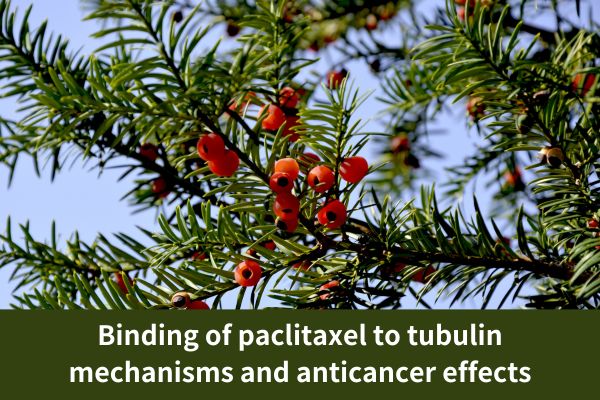paclitaxel(PTX)is a kind of natural anticancer drug with high efficiency,low toxicity and broad spectrum,and its mechanism of action mainly depends on tight binding with tubulin.This process involves a series of complex molecular interactions and is key to understanding the anti-cancer effects of paclitaxel.
Tubulin is an important protein in the cell,which is involved in the construction and maintenance of the cytoskeleton.Tubulin plays a vital role in normal cell division.However,in cancer cells,abnormal expression and functional changes of tubulin are important factors leading to disordered cell division and tumor formation.
The binding of paclitaxel to tubulin is mainly dependent on its unique tricyclic structure.The two benzene rings in this structure can bind tightly to the hydrophobic region of tubulin to form a stable complex.In addition,the acetyl group of paclitaxel at the 10-position C atom is able to form hydrogen bonds with the tubulin molecule,further enhancing the stability of this binding.
This binding has a significant effect on the function of tubulin.On the one hand,paclitaxel promotes the polymerization of tubulin to form more stable and longer microtubule fibers.This helps stabilize the cytoskeleton,but at the same time interferes with the cell’s mitosis process.On the other hand,paclitaxel inhibits the depolymerization of microtubules,causing the already formed microtubules to fail to disintegrate normally.This further interferes with the cell division process and prevents the proliferation of cancer cells.
By binding tightly to tubulin,paclitaxel effectively blocks the cell cycle in the G2/M phase,a critical stage of cell division.Unable to complete normal mitosis,cancer cells stop growing and eventually die.This mechanism plays a crucial role in killing cancer cells and controlling tumor growth.
In addition,the interaction between paclitaxel and tubulin is regulated by amino acid residues in specific regions of tubulin.These residues play a key role in the N-terminal and internal regions ofβ2 tubulin,affecting the binding pattern and stability of paclitaxel to tubulin.These details have important implications for understanding the mechanism of action of paclitaxel and optimizing its therapeutic effects.
In summary,paclitaxel interferes with the mitotic process of cells and effectively inhibits the proliferation of cancer cells through its close binding with tubulin.This mechanism provides us with a new perspective to understand the anti-cancer effects of paclitaxel and provides new strategies and directions for cancer treatment.However,how to further optimize the effect of paclitaxel,reduce its side effects and develop new drugs still need to be further studied and explored.
Note:The potential benefits and applications presented in this article are derived from the published literature.
Post time: Jan-18-2024
